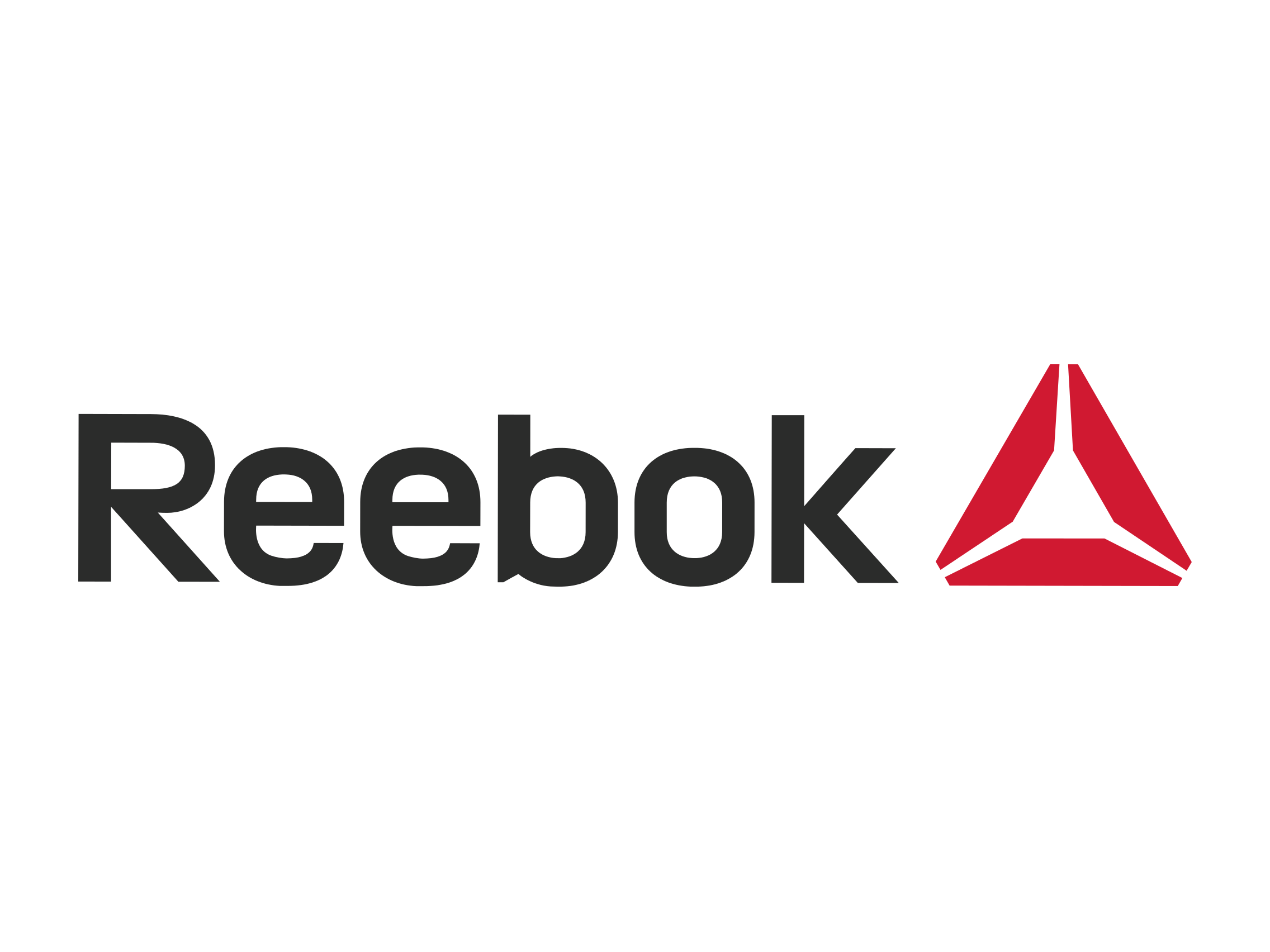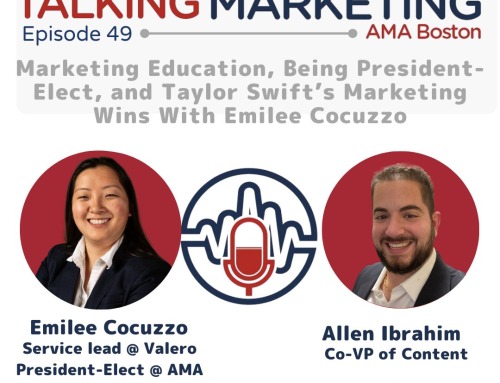AMA Boston chapter member Ben Cohen, Vice President at Denneen & Company, recently sat down with David Oksman, Reebok’s Head of Global Strategic Communications and U.S. Activation. The conversation covered a broad range of strategic brand and marketing topics, from marketing as a business driver to building a brand that lasts to the importance of aligning a company’s culture and brand.
For context, can you help us understand your background?
My career began in Ecommerce Marketing for Staples, focusing on all elements of performance-driven digital channels. I had the opportunity to drive creative briefs and manage creative, which exposed me to the value of a good brief and how to create high-performing content.
Then I moved to Digitas to work on GM’s business, and I got my first taste of “big brand” demand creation. Next, I joined Reebok and drove the build-out of Ecommerce in the U.S., including a new digital platform and infrastructure globally. The experience of owning the U.S. Ecommerce P&L solidified my appreciation for being a growth-driven and brand-building marketer.
I left Reebok for four years, during which I ran Ecommerce and was Head of Marketing for Life is Good. Finally, I returned to Reebok as Head of U.S. Marketing before joining the global organization this year. I have been extremely lucky to bring an entrepreneurial spirit to some fantastic established brands.
What is it about the Reebok brand that you are most proud of?
What I am proud of is that we have a clear purpose based on something real in the world – that through fitness you can become your best self: physically, mentally, and socially. That clear purpose sets the path for great-performing products that help people achieve their best self and that are in line with their fitness lifestyle. It also enables us as marketers to create compelling engagements that enrich our consumers lives.
Also, Reebok has a culture that is 100% aligned with its purpose. Fitness is an important part of every person and partner that works on the brand. This shows our commitment, our focus, and ultimately the spirit of our purpose-driven brand. We truly seek to do something special in the marketplace.
Which brand or marketing activity is most important for “moving the needle” for the business?
There is no silver bullet. It is a complex ecosystem so you have to get it right from the start and ensure that everything starts with the consumer. This will drive a “ripple effect” through your brand and communications strategy, planning, and execution. This consumer-centric approach will also create clarity across all the other elements of your culture and business.
So what does consumer-centric look like to you?
I believe that great brands start with the consumer. Being consumer-obsessed, being consumer-centric, is the backbone of any brand that is going to break through in today’s consumer-driven market.
Our vision, mission, purpose, and values are not for us, the company. We have developed them because consumers have told us that this is meaningful and important to them. We want to help curate that experience and be part of that journey with them.
It begins with understanding your consumer via segmentation and research and also getting out of these four walls and into the world. Then you are set up for success to create great products that help them achieve their fitness and lifestyle goals.
Being relevant and showing up in compelling ways in the places where they shop. Driving meaningful engagement through partnerships and influencers. Leveraging the digital ways that a consumer engages with the world.
Everything begins and ends with your ability to truly understand who the consumer is and what matters to them. If you are constantly asking yourself, “What would my consumer say about this decision?”, then you are probably on the right path.
Considering all the ways that you can learn from consumers, what have you found most useful or effective?
At Reebok, we have an amazing Consumer Insights team, who are experts and who do excellent work. The way that I try and supplement their work is by personally going out in the world. There is nothing I enjoy more than visiting the markets. Talking to people at gyms and at the “shoe wall” in a retail store is one of the best ways to truly learn, and understand where your brand is and what your brand represents.
How would you describe “what good looks like” for consumer research and its outputs?
An insight that can drive action – an insight that allows us to create stronger messaging, experiences, and products. An insight regarding the needs of a consumer, especially an unmet need in the marketplace, a problem that can be solved. And ultimately anything that can help us better understand how that consumer engages with the world.
What are the most important types of brand and marketing metrics that you track?
I always talk to our teams about desired outcomes – what are we trying to achieve? – and then Key Performance Indicators (KPIs) – how do we know if we were successful?
We focus both on business objectives and brand health metrics. Particularly the metrics that show us if we are making a difference in the drivers of consumer consideration and choice that lead to and affect overall brand health.
Is there anything that you consider a metric that you wish you had or could better track?
I would love to see the entire consumer journey, especially when they purchase from a retailer outside our own channels. I would also love to see more ways in which the consumer is engaging with culture.
Do you have any advice for working most effectively with external agencies?
I view external agencies as staff augmentation. So that means treating them as an extension of the team and ensuring they are as informed as anyone internally would be. We provide them with that clarity especially through a quality brief that enables them to execute with excellence.
What do you see as key characteristics of a “good” creative brief?
Briefs should be concise and simple and clear. They should outline the challenge, the circumstances around it, and the objectives. We as marketers can all do a better job of building better briefs. If the problem that you’re trying to solve cannot be articulated cleanly and in a couple sentences, then you probably do not know what you’re trying to solve.
How do you see brand and marketing approaches or activities changing in the next 5 years for a brand like Reebok?
Brands will have to catch up to the digital transformation of the consumer. We will need to understand how to use technology to best meet their demands. That includes recognizing that the “window” at retail is a shifting landscape, since the consumer is looking at their device as they walk in the door and the experience they want in store is evolving.
Virtual and augmented reality will transform how we can engage with consumers. And ultimately the role of retail will go through a dramatic transformation. I do not think retail will die, but instead that it will become a more experiential value-added landscape where the consumer can be much more immersed in your brand versus looking through racks of product, which you can do on a website.
How do you see the job and skillsets of marketers changing in the next 5 years?
On the one hand, the social and digital native generation is bringing a fresh perspective on engagement, and they are helping us understand what it means to live in the new world and economy. On the other hand, there are the earlier generations that tend to have more of a performance-driven, business-building perspective.
And we need to blend these two mentalities or competencies in a way that leads to marketers being consumer-centric, while also understanding the value of brand loyalty in a competitive marketplace.
To be specific about skills, marketers will need to be highly tech savvy, data-driven, innovative, and really focused on creating meaningful experiences for the consumer – especially retail marketers who have historically been mostly focused on “window to wall.”
Do you have any final thoughts for marketers?
It’s an exciting time to be a marketer. The landscape is shifting, and we can craft the future of the marketing function, as well as the trajectory of brands and business in general. There has never been a time like this where the marketing function truly is the heart and soul of the business.









